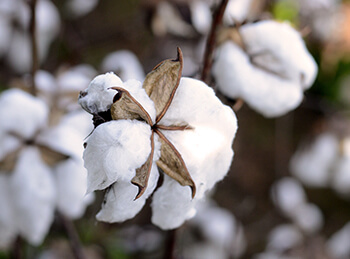Keep an eye on soil nutrient removal
Dec 14, 2020

For the past two seasons, good growing conditions, improved seed technology, and a myriad of input tools have combined to push crop yields to above-average levels. But higher yields also mean higher nutrient removal from soils. As the harvested portion of a crop is removed from the field, all of those nutrients that were used to produce the crop also are being hauled away.
Potassium levels are one of the growing concerns. Soil-test results this year across Tennessee showed that more than 40 percent of soils were low or very low in potassium. This mirrors national trends with potassium levels falling to critical stages.
The most common cause is potassium applications that fall short of what is removed from the field at harvest. For instance, soybeans can remove large amounts of potassium, more than corn in many areas. But forage crops, like corn silage and alfalfa, remove the most by far. The reason is that much of the potassium in the plant is found in vegetative parts, like stems and leaves. When these are removed from the field, substantial amounts of potassium go with them. Failing to account for these losses and under-fertilizing with potassium can lead to problems.
Soils that are very low in potassium reduce yields and quality. A real problem for many is the effect low potassium has on nitrogen efficiency. If only nitrogen is applied on potassium-deficient soils, overall yields can be reduced far below the level of fields where the same amount of nitrogen is applied on soils with adequate potassium. This reduces the amount of grain or forage produced per pound of nitrogen. In addition, inadequate potassium can also substantially change the economically optimum application rate of nitrogen. So, unless potassium deficiencies are corrected, nitrogen management and response can become a limiting factor as well.
It’s also important to look at micronutrient removal. Already, 40 to 60 percent of this year’s soil samples show low to very low levels of sulfur, zinc, and boron. Couple that with increased yields, and we could see even lower micronutrient levels.
Increased rainfall has an impact on the loss of nutrients as well. While we know that nitrogen can leach, potassium can also be lost this way, although it’s much less leachable than nitrogen. Phosphorous can leach as well but is more likely to be lost due to surface runoff.
After this great growing year, there is no better time to consider soil testing. It’s the only true way to get an accurate reading of soil nutrient levels and will give both grower and retailer a scientific-based start to planning an efficient, effective soil fertility program.
Potassium levels are one of the growing concerns. Soil-test results this year across Tennessee showed that more than 40 percent of soils were low or very low in potassium. This mirrors national trends with potassium levels falling to critical stages.
The most common cause is potassium applications that fall short of what is removed from the field at harvest. For instance, soybeans can remove large amounts of potassium, more than corn in many areas. But forage crops, like corn silage and alfalfa, remove the most by far. The reason is that much of the potassium in the plant is found in vegetative parts, like stems and leaves. When these are removed from the field, substantial amounts of potassium go with them. Failing to account for these losses and under-fertilizing with potassium can lead to problems.
Soils that are very low in potassium reduce yields and quality. A real problem for many is the effect low potassium has on nitrogen efficiency. If only nitrogen is applied on potassium-deficient soils, overall yields can be reduced far below the level of fields where the same amount of nitrogen is applied on soils with adequate potassium. This reduces the amount of grain or forage produced per pound of nitrogen. In addition, inadequate potassium can also substantially change the economically optimum application rate of nitrogen. So, unless potassium deficiencies are corrected, nitrogen management and response can become a limiting factor as well.
It’s also important to look at micronutrient removal. Already, 40 to 60 percent of this year’s soil samples show low to very low levels of sulfur, zinc, and boron. Couple that with increased yields, and we could see even lower micronutrient levels.
Increased rainfall has an impact on the loss of nutrients as well. While we know that nitrogen can leach, potassium can also be lost this way, although it’s much less leachable than nitrogen. Phosphorous can leach as well but is more likely to be lost due to surface runoff.
After this great growing year, there is no better time to consider soil testing. It’s the only true way to get an accurate reading of soil nutrient levels and will give both grower and retailer a scientific-based start to planning an efficient, effective soil fertility program.